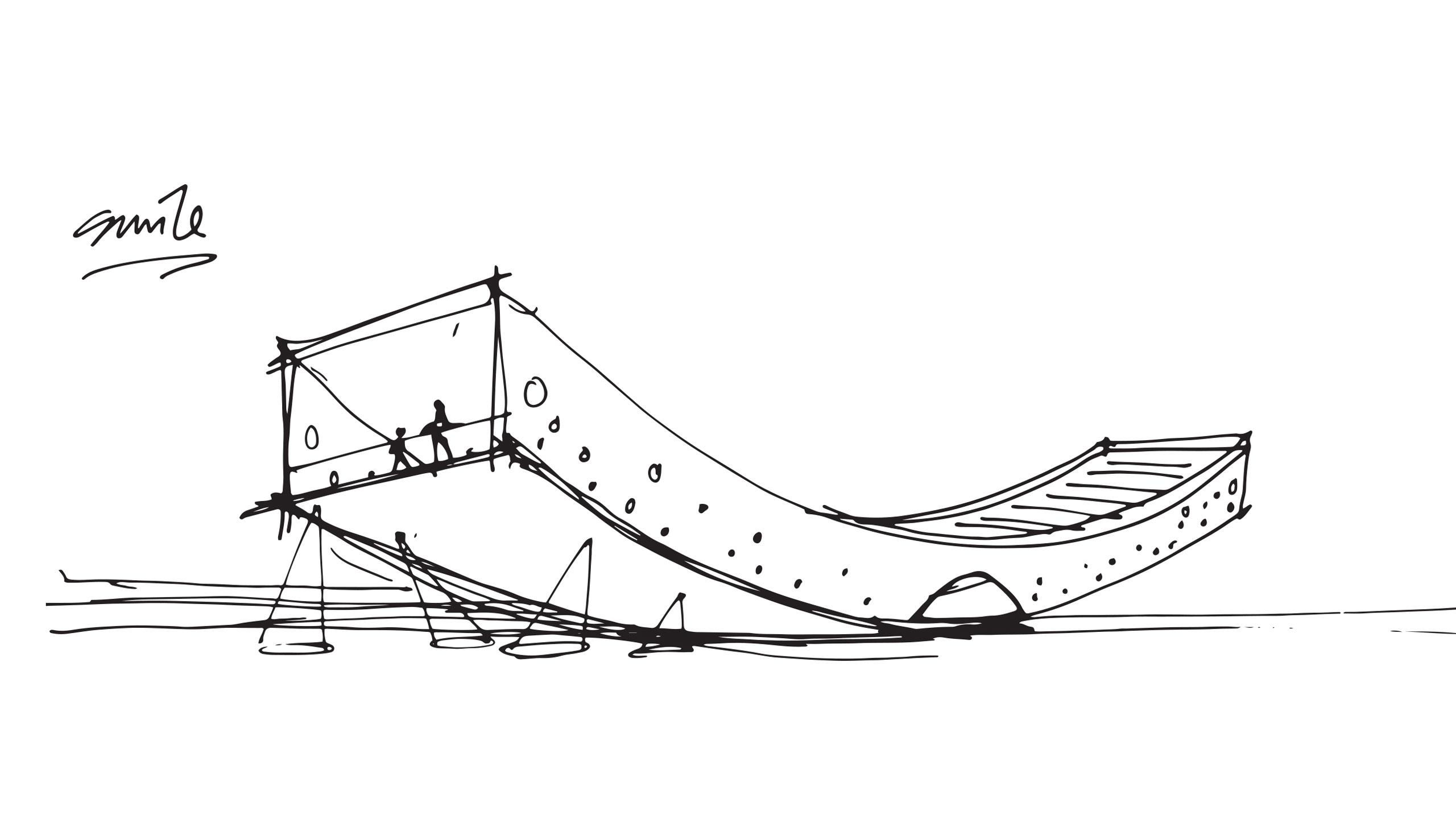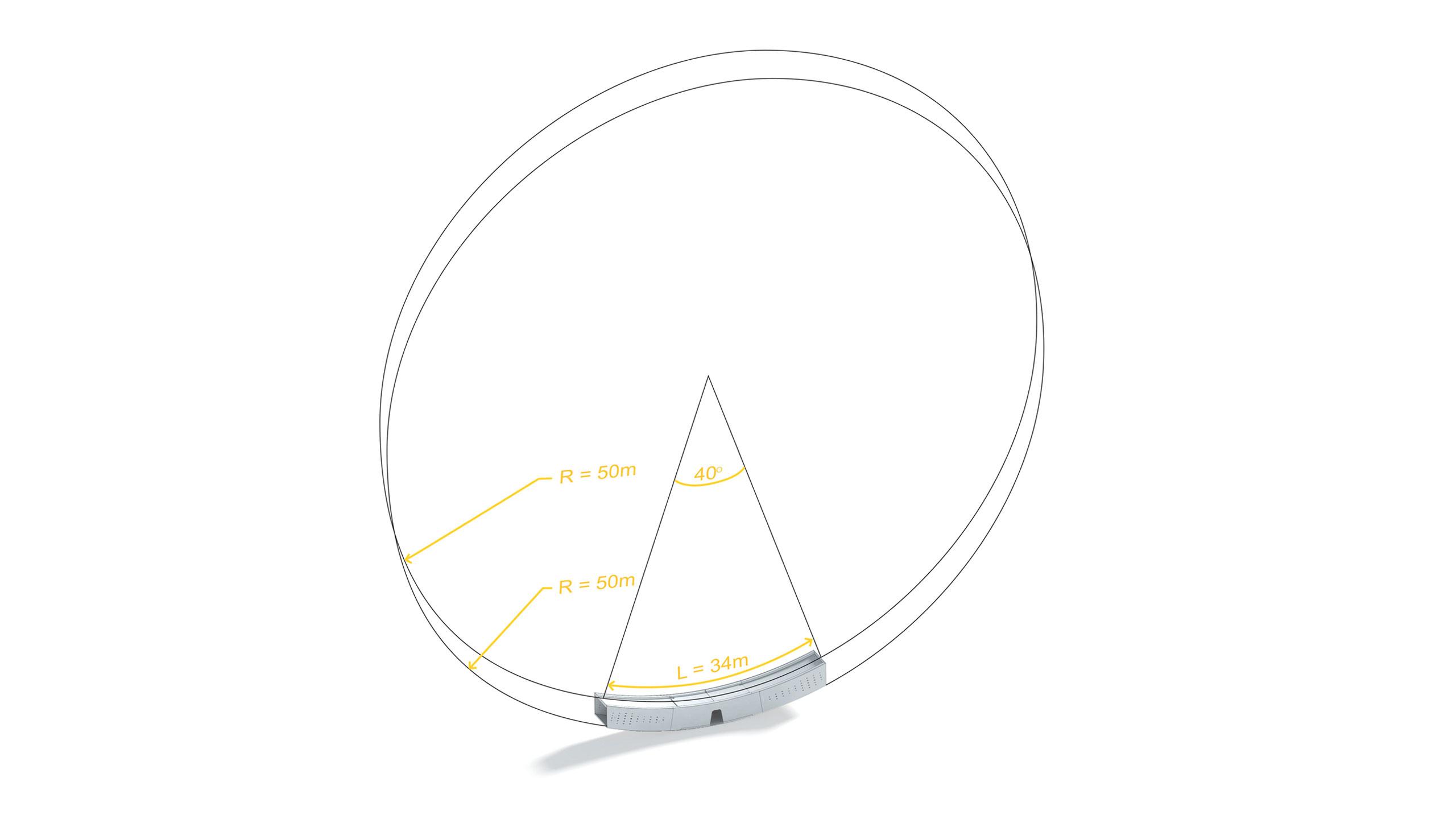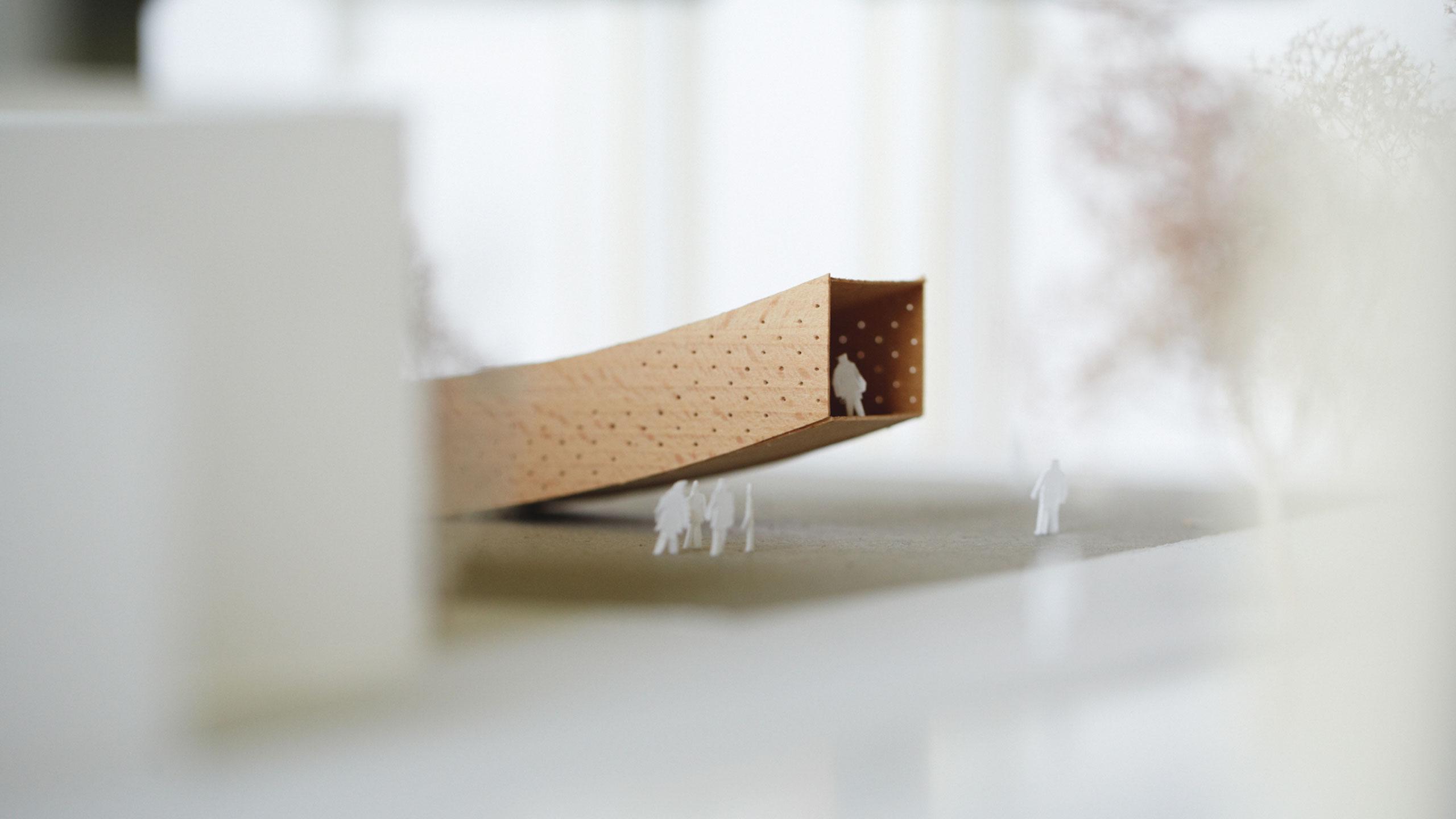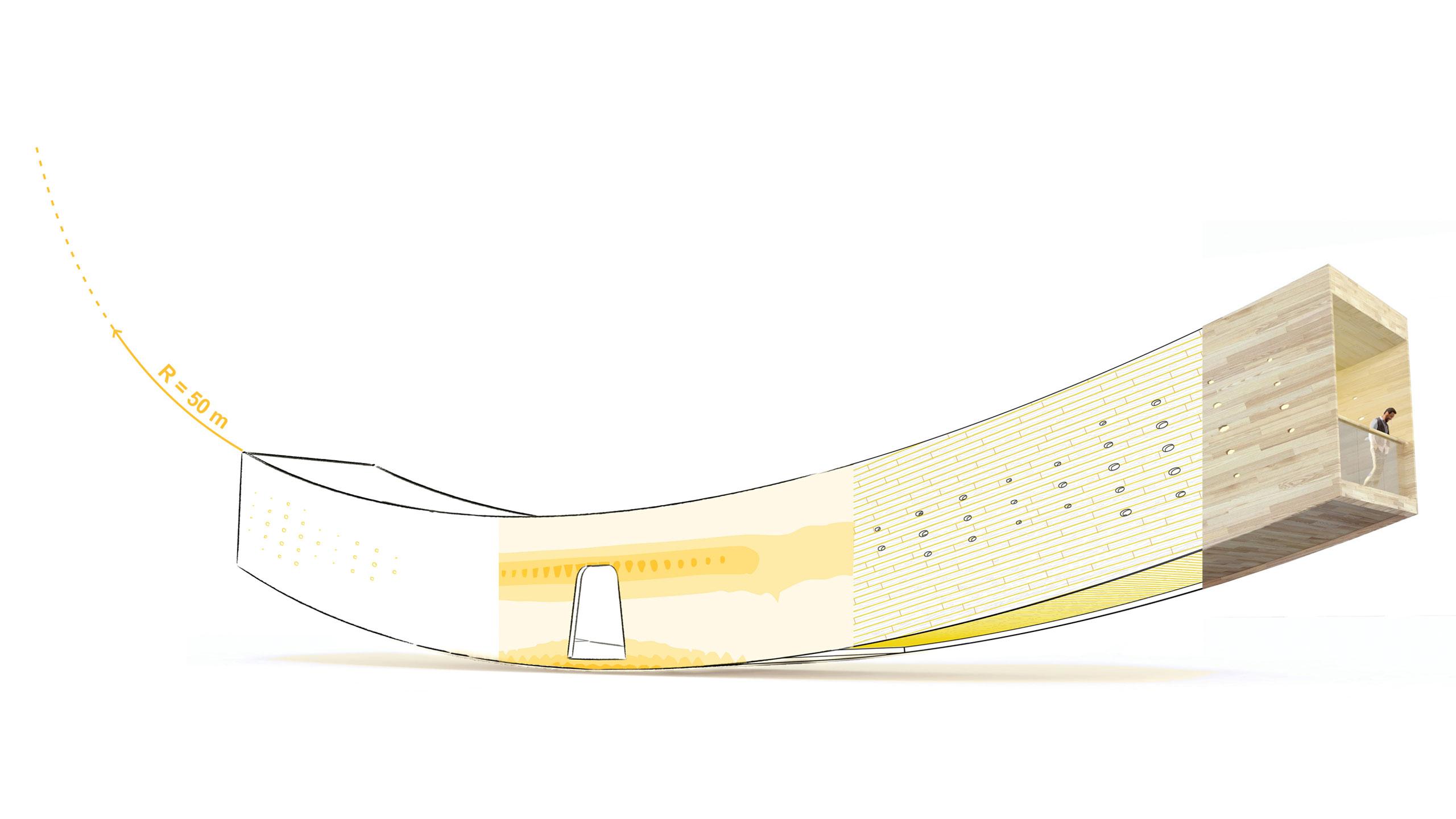DESIGN PROCESS
This project set out to test American tulipwood CLT and showcase it in a series of construction products. Exploiting the properties of tulipwood CLT, Architect Alison Brooks came up with the concept of a beam that curves up at both ends. The CLT tube is an inherently strong shape, in the same way that a steel tube is. The curve means that it cantilevers from, effectively, a single point in the centre.
Although she has worked with Glulam, Brooks has never had the opportunity to work with CLT before – she has tried to specify it but because for example of acoustic constraints it has never been possible to use it without a great number of additional layers.’ ‘Tulipwood itself is not heavy which is helpful; and it has character and a tight grain’, Brooks says.
Andrew Lawrence, Arup’s global timber specialist sees great potential for tulipwood CLT. ‘The reason that timber construction has really taken off, in addition to the sustainability argument, is down to three factors,’ Lawrence says. These are CNC fabrication, the invention of CLT and the introduction of cheap modern self-tapping screws.
‘The thing about this project,’ he says,’is that it actually combines all three innovations. It is all CLT. Nearly all the connections are modern self-tapping screws, and it completely relies on CNC manufacture.’ Softwood will always be the workhorse of timber construction, but where improved strength and appearance are needed, then he believes hardwood CLT is the answer.




